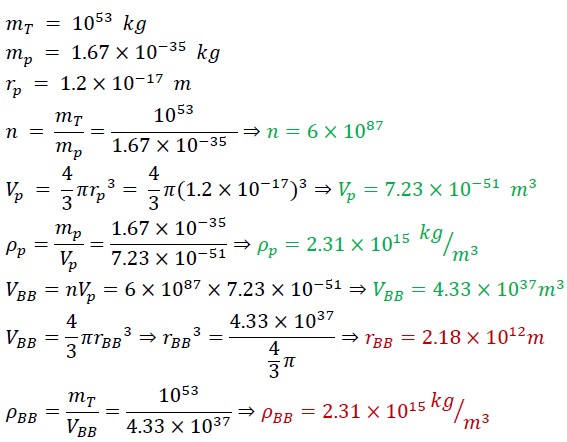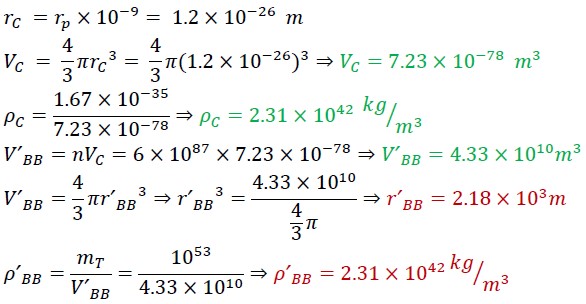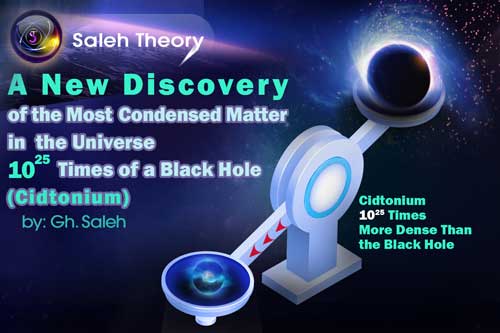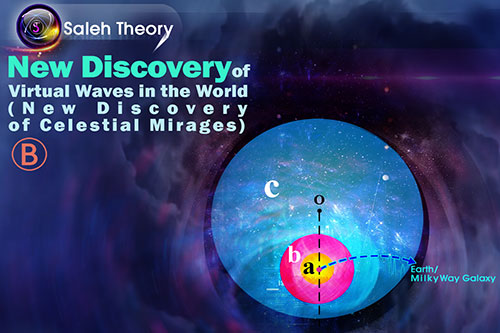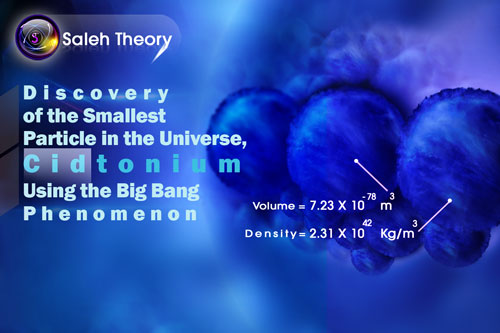
Discovery of the Smallest Particle in the Universe, Cidtonium, Using the Big Bang Phenomenon
The ancients believed that the materials are made up of four elements: fire, air, water and earth. Over time, with the progress of science, materials were classified based on the constituent molecules, and then they were classified based on the constituent atoms of the molecules, which are the same elements.
If you consider the periodic table of elements (Mendeleev's table), the mother of all elements is hydrogen, which by adding electrons, neutrons, and protons in atoms, we reach newer elements.
The interesting point is that the elements with their structures are changed physically and chemically, that if we pay attention to the elements in Mendeleev's table, the density range starts from Hydrogen (about 0.09 kg/m3) and continues to Osmium (22590 kg/m3).
After the elements of Mendeleev's table, in which some of them have partly high density, we reach objects in the universe such as white dwarfs, magnetars, black holes, etc., if it looks carefully, the density range of these objects is 1014 to 1020 kg/m3.
As we know, the nature of these objects is no longer atomic, but their structure has been broken and they do not have the previous atomic structure, in fact, these are atomic nuclei (nucleons) that are placed together and create high density.
And if we look at elements such as iron, lead, and mercury, we find that the density of mercury is higher than all of them, but its hardness is much less than the others. In fact, it can be said that sometimes an element has a higher density, but it has a much lower hardness and compression.
Or, for example, compressed woods have high hardness, but a lower density.
In fact, it can be said that sometimes the density is high, but the hardness and compression are low, and sometimes it is even the opposite.
Result: Every object that exists in the universe has a specific density, specific hardness, and specific compression that these three items are not necessarily equivalent, and sometimes it would be contrariwise.
For example, water when turns from the liquid phase to the solid, becomes a hard object, but its density is reduced.
In the Big Bang phenomenon, if we consider the photon as its constituent particle, according to the above result and the calculations, we can say that a particle called Photon cannot be the particle we are looking for that can create the Big Bang phenomenon, or justify and explain it.
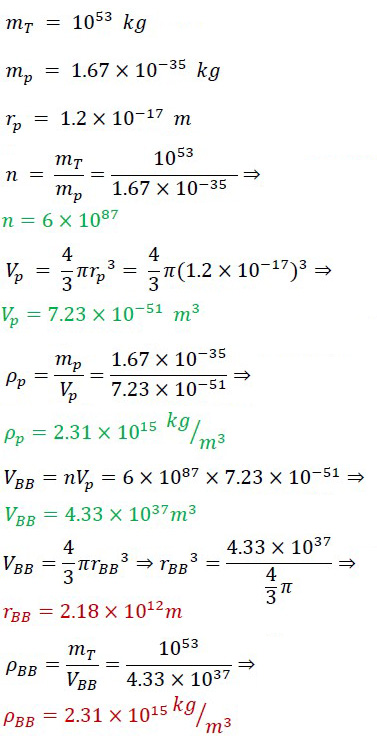
Where 𝑚T is the total mass of universe, 𝑛 is the number of photon, 𝑚𝑝, 𝑟𝑝, 𝑉𝑝 𝑎𝑛𝑑 𝜌𝑝 are the mass, radius, volume and density of the photon and rBB, VBB and ρBB are the radius, volume and density of the Big Bang sphere.
In fact, we should consider a particle that is a subset of the photon, and its radius would be about 10-9 times the radius of the photon that this particle has been the creator and constituent of the Big Bang.
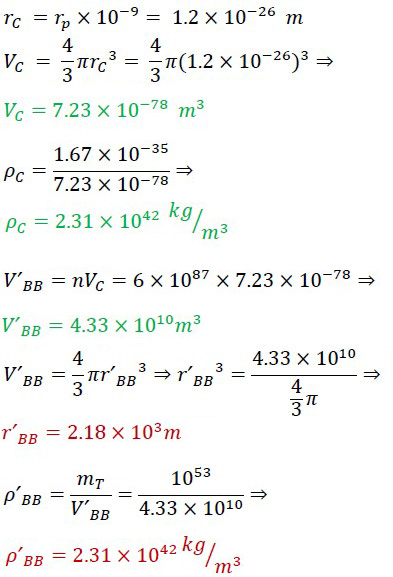
Where 𝑚T is the total mass of universe, 𝑛 is the number of Cidtonium, 𝑟𝐶, 𝑉𝐶 𝑎𝑛𝑑 𝜌𝐶 are the radius, volume and density of the Cidtonium and rˊBB, VˊBB and ρˊBB are the radius, volume and density of the Big Bang sphere based on Cidtonium.
And as in heavy objects such as black holes, magnetars, etc., nuclei (nucleons) are placed next to each other and form their structure, while there is no atomic structure at all, these sub-photon particles (Cidtonium) have placed next to each other, and have created the initial structure of the Big Bang.

